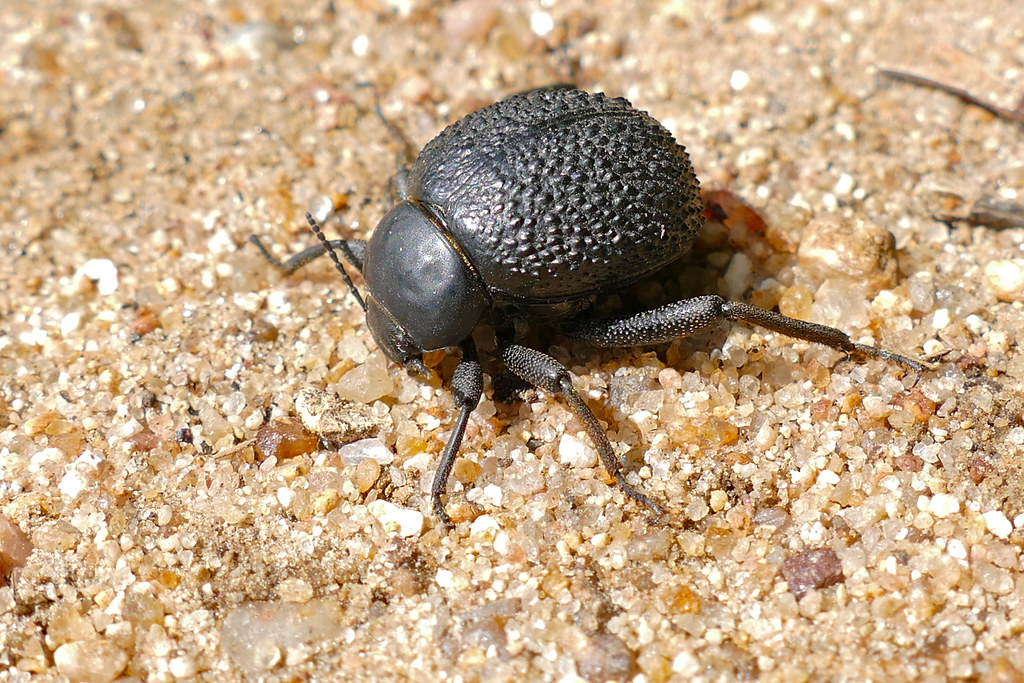In the scorching heat of the Namib Desert, where rainfall is as rare as finding snow in the Sahara, a tiny beetle has mastered one of nature’s most ingenious survival tricks. While most creatures would perish in this harsh landscape where temperatures soar above 140°F and water is virtually non-existent, the Namib Desert beetle has evolved an extraordinary ability that seems almost magical. This remarkable insect literally drinks fog from the air using nothing more than its own back, transforming morning mist into life-sustaining water droplets. It’s a biological marvel that has captured the attention of scientists worldwide and inspired revolutionary new technologies.
The Namib Desert’s Harsh Reality

The Namib Desert stretches along Africa’s Atlantic coast, earning its reputation as one of the world’s most unforgiving environments. With less than half an inch of rainfall per year, this ancient landscape has remained virtually unchanged for millions of years. The desert’s extreme conditions create a place where only the most adaptable species can survive.
Most animals would die within hours in this environment, but the Namib Desert beetle thrives here. The beetle faces daily temperature swings that would challenge even the hardiest desert dwellers. During the day, surface temperatures can reach levels that would literally cook most insects alive.
Yet it’s precisely these extreme conditions that have shaped one of nature’s most remarkable adaptations. The beetle’s survival strategy emerged from millions of years of evolution in this challenging habitat. What makes this story even more fascinating is that the beetle’s solution doesn’t involve finding traditional water sources at all.
Meet the Stenocara Gracilipes

The Namib Desert beetle, scientifically known as Stenocara gracilipes, belongs to the darkling beetle family and measures roughly half an inch in length. These nocturnal creatures spend their days buried in sand dunes, emerging only when conditions become favorable for their unique water-harvesting ritual. Their dark, hardened wing covers called elytra serve as more than just protection from predators.
What sets this beetle apart from its relatives isn’t its size or appearance, but rather the microscopic architecture of its back. The beetle’s elytra feature a complex pattern of hydrophilic and hydrophobic regions that work together like a natural water collection system. This intricate surface design allows the beetle to exploit the desert’s only reliable moisture source.
Unlike many desert animals that have evolved to conserve water through specialized kidneys or behavioral adaptations, the Namib Desert beetle takes a completely different approach. Instead of simply conserving what little water it can find, this remarkable insect has learned to harvest water directly from the air around it.
The Science Behind Fog Formation
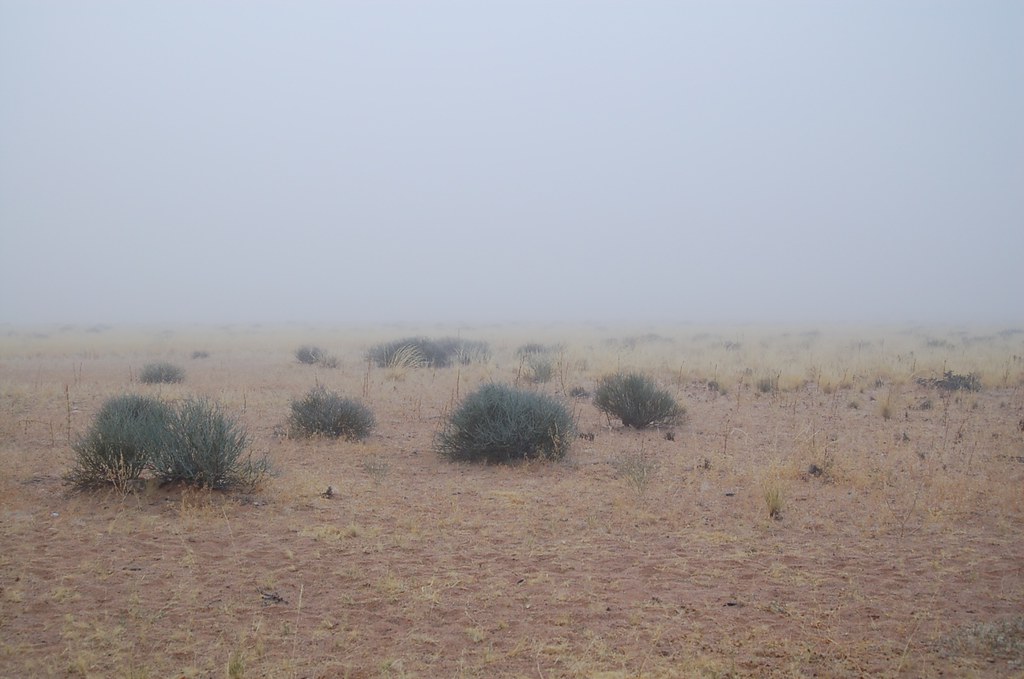
Fog in the Namib Desert occurs when the cold Atlantic Ocean meets the scorching desert air, creating a natural phenomenon that the beetle has learned to exploit. This coastal fog can extend up to 60 miles inland, bringing precious moisture to an otherwise bone-dry landscape. The fog typically forms during the early morning hours when temperature differentials are at their peak.
The process begins when warm, moist air from the ocean encounters the much cooler desert surface. This temperature difference causes water vapor to condense into tiny droplets suspended in the air. These microscopic water particles create the fog that rolls across the desert like a ghostly blanket.
For the Namib Desert beetle, this fog represents a life-saving opportunity that occurs with remarkable regularity. The beetle has evolved to time its water-collecting behavior precisely with these fog events. This natural phenomenon provides the only consistent source of moisture in an environment where traditional water sources are virtually non-existent.
The Beetle’s Remarkable Back Architecture
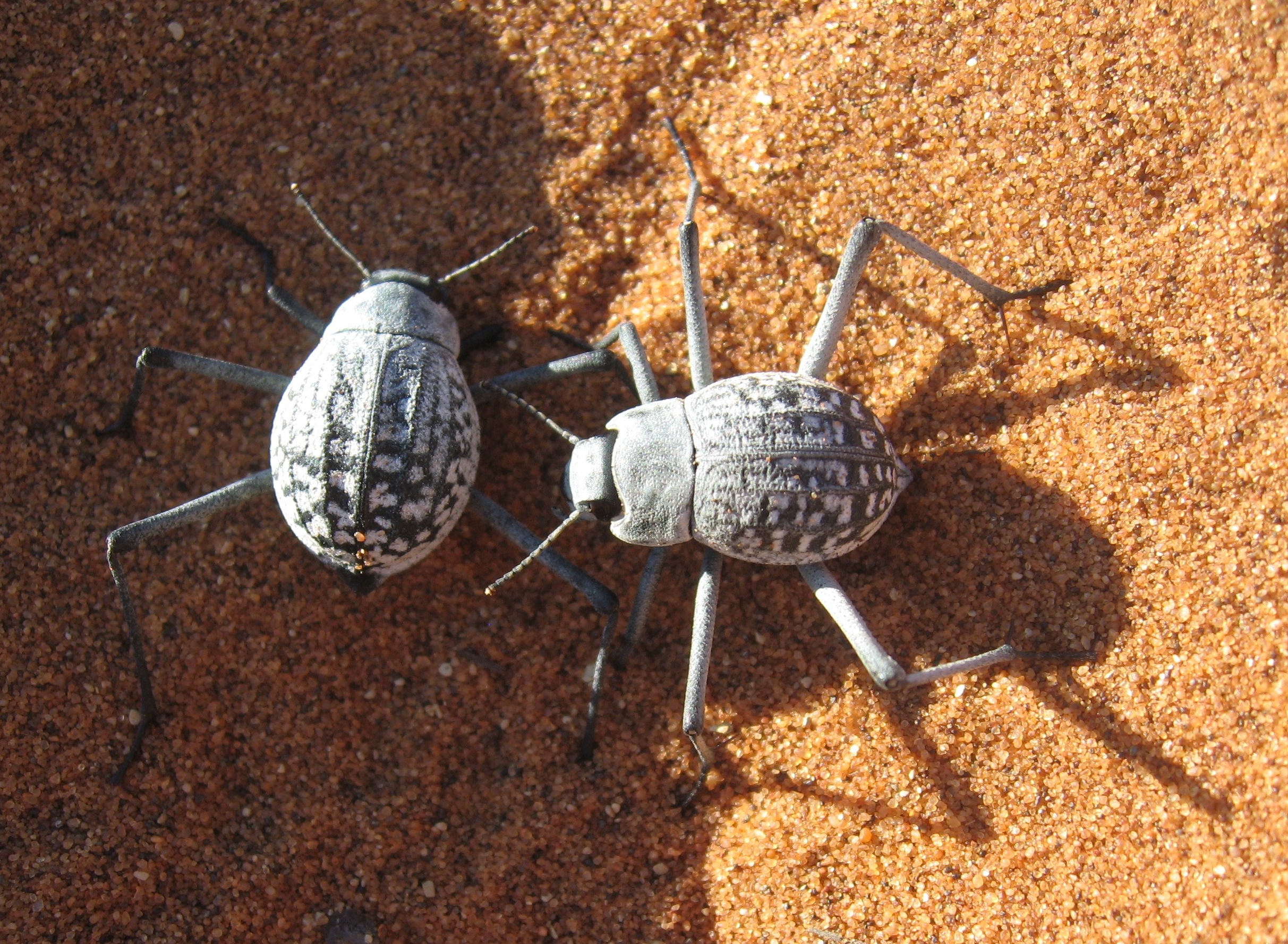
The key to the beetle’s survival lies in the extraordinary design of its back, which features alternating regions of water-loving and water-repelling surfaces. These areas, measured in micrometers, create a sophisticated water collection system that rivals modern engineering achievements. The hydrophilic regions act like tiny magnets for water molecules, while the hydrophobic areas channel collected water toward the beetle’s mouth.
Under a microscope, the beetle’s back reveals a landscape of peaks and valleys covered in microscopic bumps and smooth areas. The bumps are hydrophilic, meaning they attract and hold water molecules from the surrounding fog. The valleys between these bumps are hydrophobic, creating a natural drainage system that prevents water from spreading randomly across the surface.
This intricate pattern covers the entire surface of the beetle’s elytra, creating thousands of tiny water collection points. Each hydrophilic spot can capture multiple water droplets from the fog, while the surrounding hydrophobic regions ensure that the collected water flows efficiently toward the beetle’s mouth rather than evaporating back into the air.
The Water Collection Process in Action

When fog rolls across the desert, the Namib Desert beetle positions itself strategically to maximize water collection, tilting its body at a precise angle to catch the moisture-laden air. The beetle raises its rear end higher than its head, creating a natural slope that helps gravity move collected water droplets toward its mouth. This positioning is crucial for the success of the entire water-harvesting process.
As fog particles collide with the beetle’s back, they stick to the hydrophilic bumps and begin to accumulate. Multiple tiny droplets merge on each bump, forming larger water drops that eventually become too heavy to remain suspended on the surface. The beetle must maintain its position perfectly still during this process, as any movement could disrupt the delicate water collection system.
The hydrophobic valleys between the bumps act like microscopic water slides, channeling the collected droplets toward the beetle’s mouth. This ingenious system ensures that virtually no collected water is wasted. The entire process can take anywhere from a few minutes to several hours, depending on fog density and duration.
Timing and Behavioral Adaptations
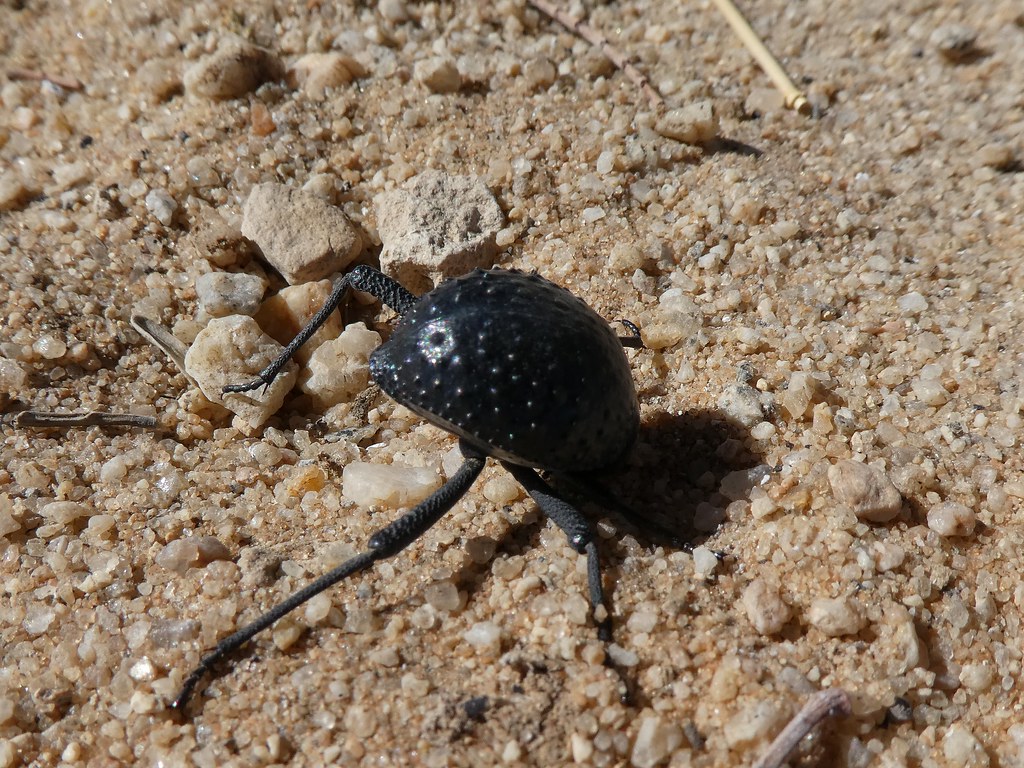
The beetle’s water-collecting behavior is perfectly synchronized with the desert’s fog patterns, demonstrating an extraordinary level of environmental awareness. These insects have developed an internal clock that allows them to emerge from their sandy hiding places just before fog typically arrives. This timing is critical because fog events in the Namib Desert are both predictable and brief.
Research has shown that the beetles can detect subtle changes in humidity and temperature that signal approaching fog. They position themselves on sand dune ridges where fog is most likely to be dense and long-lasting. The beetles also seem to understand wind patterns, choosing locations where fog will linger rather than dissipate quickly.
During fog events, the beetles remain motionless for extended periods, sometimes maintaining their water-collecting position for hours. This behavior requires significant energy expenditure, but the water reward makes it worthwhile. The beetles have learned that patience and precise positioning are essential for successful water collection in their harsh environment.
Efficiency of the Water Harvesting System
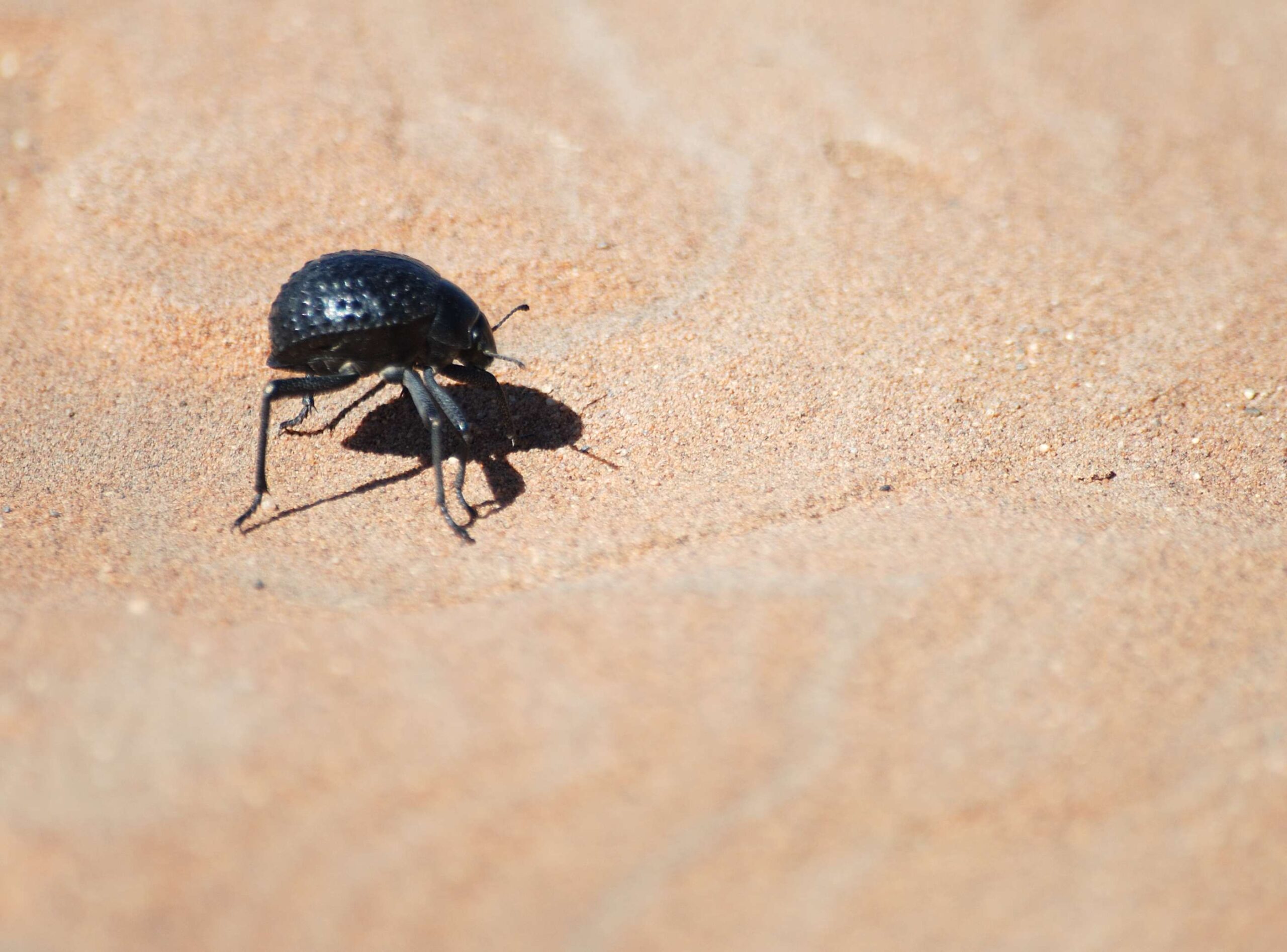
The beetle’s water collection system operates with remarkable efficiency, capable of harvesting up to 12% of its body weight in water during a single fog event. This might not sound like much, but in a desert environment where water is scarcer than gold, this amount represents a substantial survival advantage. The system can collect water from fog with humidity levels as low as 35%, far below what most other water collection methods require.
Scientists have calculated that the beetle’s back can collect water droplets measuring just 15 micrometers in diameter. This microscopic collection ability allows the beetle to exploit even the lightest fog conditions. The efficiency of the system stems from the precise arrangement of hydrophilic and hydrophobic regions, which maximizes both collection and transport of water molecules.
The beetle’s water harvesting system operates entirely through passive means, requiring no energy input from the insect beyond maintaining proper positioning. This energy efficiency is crucial for survival in an environment where food sources are also extremely limited. The system’s effectiveness has inspired engineers to develop similar technologies for human use in water-scarce regions.
Microscopic Details of Surface Structure
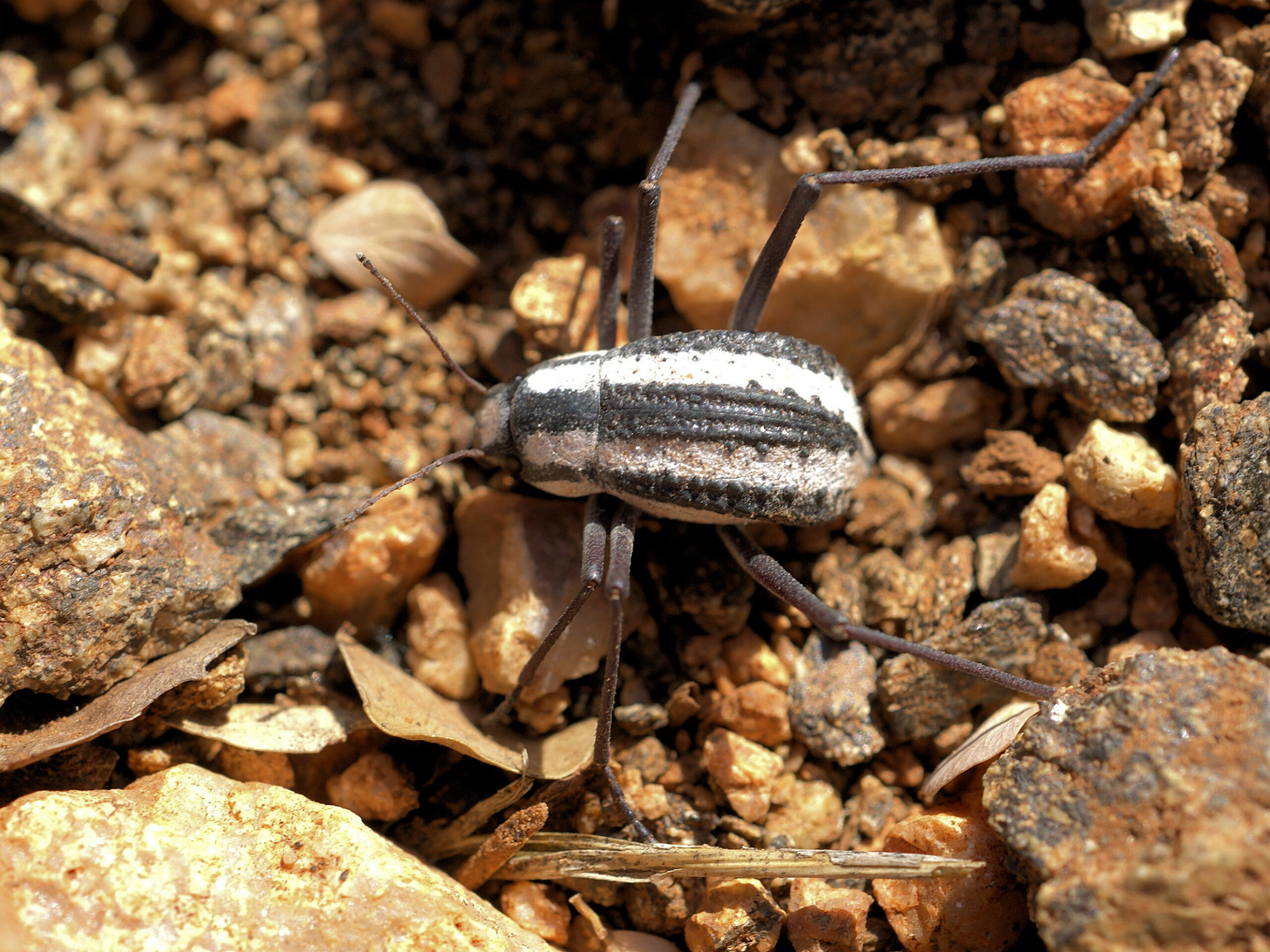
The beetle’s back features a complex hierarchy of surface structures that work together to optimize water collection at multiple scales. At the nanoscale level, the hydrophilic bumps are covered in tiny peaks and ridges that increase surface area for water droplet adhesion. These microscopic features create what scientists call “surface roughness” that enhances the beetle’s ability to capture water molecules from fog.
The hydrophobic valleys contain even smaller structures that reduce surface tension and encourage water droplets to roll rather than stick. These areas are coated with a waxy substance that repels water molecules, ensuring that collected droplets flow smoothly toward the beetle’s mouth. The contrast between these two surface types creates a highly efficient water transport system.
Advanced imaging techniques have revealed that the beetle’s surface structure operates on at least three different scales simultaneously. The largest scale involves the overall arrangement of hydrophilic and hydrophobic regions, while smaller scales include microscopic bumps and nanoscale surface textures. This multi-scale approach maximizes the system’s effectiveness across different fog conditions and droplet sizes.
Evolutionary Development of This Adaptation
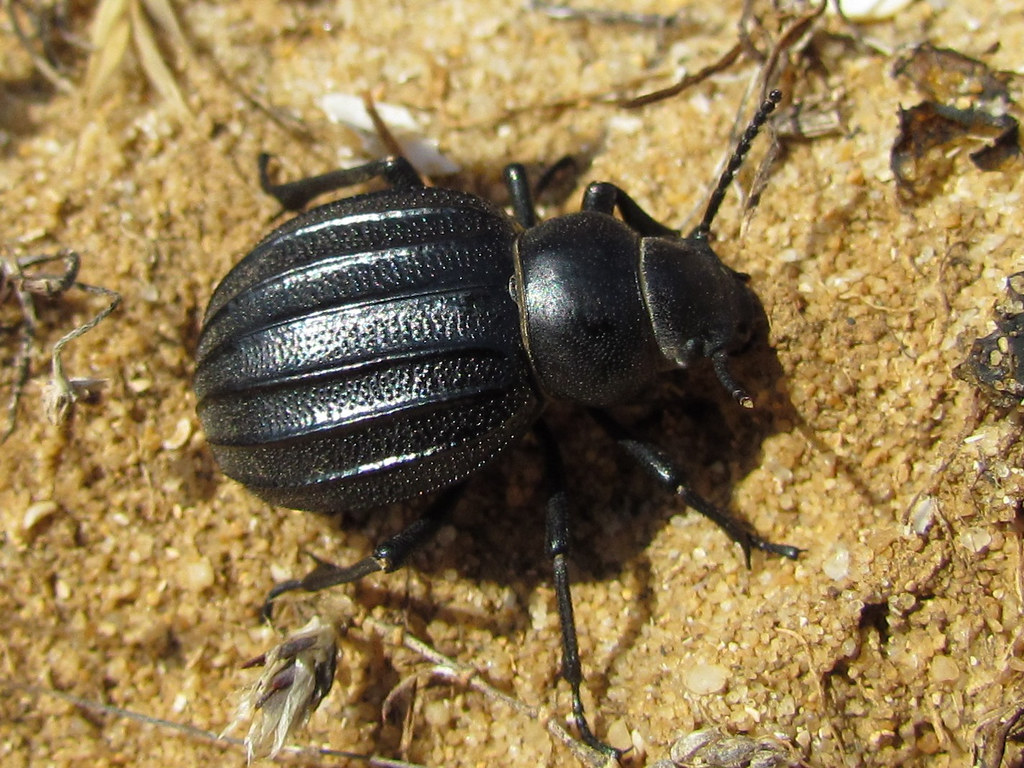
The beetle’s fog-harvesting ability represents millions of years of evolutionary refinement in response to the Namib Desert’s extreme conditions. Fossil evidence suggests that the desert has maintained similar climate conditions for at least 55 million years, providing ample time for this remarkable adaptation to develop. The beetle’s ancestors likely possessed basic water-repelling capabilities that gradually evolved into the sophisticated system we see today.
Genetic studies indicate that the genes responsible for the beetle’s surface structure are highly conserved, suggesting that this adaptation provides such a strong survival advantage that it has remained unchanged for thousands of generations. The precision of the hydrophilic and hydrophobic pattern arrangement suggests that even small variations in the system could significantly impact the beetle’s survival chances.
Researchers believe that the beetle’s water-collecting ability evolved through a process of gradual refinement rather than sudden innovation. Each generation that possessed slightly better water collection capabilities had improved survival rates, leading to the eventual development of the highly efficient system we observe today. This evolutionary process demonstrates how extreme environmental pressures can drive remarkable biological innovations.
Comparison with Other Desert Survival Strategies
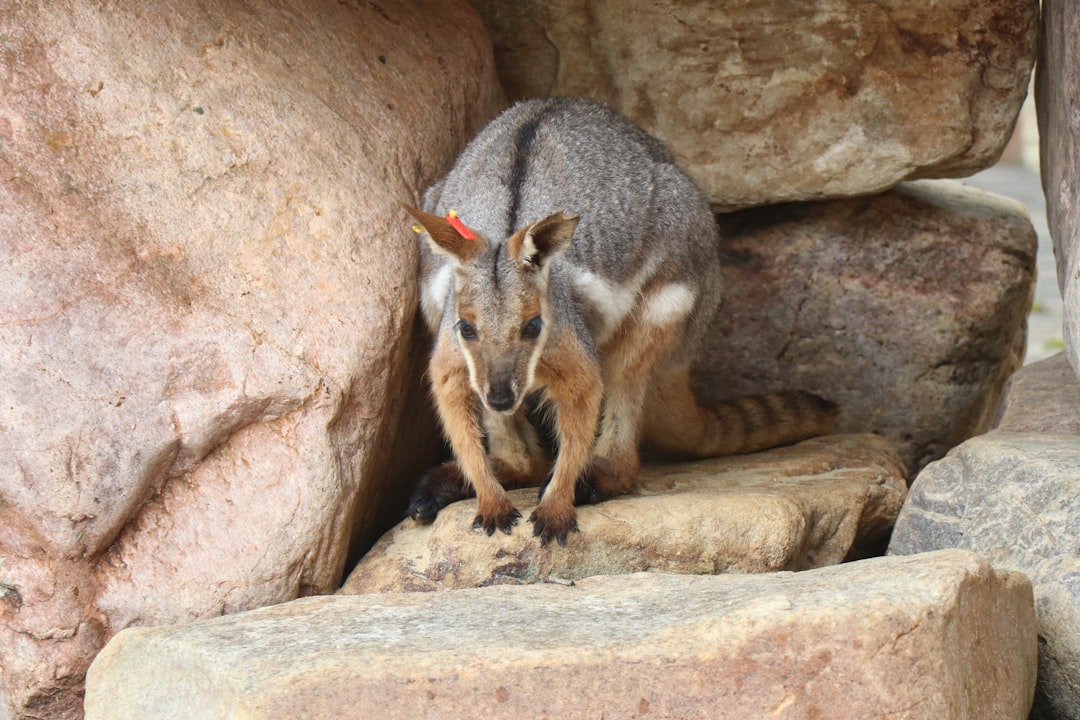
While many desert animals have evolved impressive water conservation strategies, the Namib Desert beetle’s approach stands out as uniquely innovative. Most desert creatures focus on minimizing water loss through behavioral adaptations, specialized kidneys, or metabolic changes. The beetle, however, has developed a method for actively harvesting water from an environment where liquid water is virtually absent.
Kangaroo rats, for example, survive in deserts by producing highly concentrated urine and obtaining water from metabolizing dry seeds. Camels store water in their humps and can survive for weeks without drinking. These strategies focus on making the most of scarce water resources rather than finding new sources.
The beetle’s fog-harvesting system represents a fundamentally different approach to desert survival. Instead of simply conserving water, the beetle has learned to extract moisture directly from the atmosphere. This strategy allows the beetle to thrive in environments too extreme for most other water conservation methods to be effective.
Human Applications and Biomimicry

Engineers and scientists have become fascinated with the beetle’s water collection system, leading to the development of biomimetic technologies that could help address global water scarcity. Researchers have created synthetic surfaces that mimic the beetle’s hydrophilic and hydrophobic pattern arrangement, achieving water collection efficiencies that approach those of the natural system. These technologies could potentially provide clean water in arid regions where traditional water sources are unavailable.
Several companies have developed fog-harvesting nets inspired by the beetle’s design, capable of collecting thousands of gallons of water per day in suitable climates. These systems use similar principles of alternating water-attracting and water-repelling surfaces to maximize collection efficiency. The technology has been tested in various locations around the world, from coastal deserts to mountain regions where fog is common.
Military applications of beetle-inspired water collection systems are also being explored for use in desert operations. Portable water collection devices based on the beetle’s design could provide soldiers with a reliable source of clean water in environments where traditional water sources are unavailable or compromised. These innovations demonstrate how studying nature’s solutions can lead to practical technologies that benefit human society.
Environmental Factors Affecting Collection Success
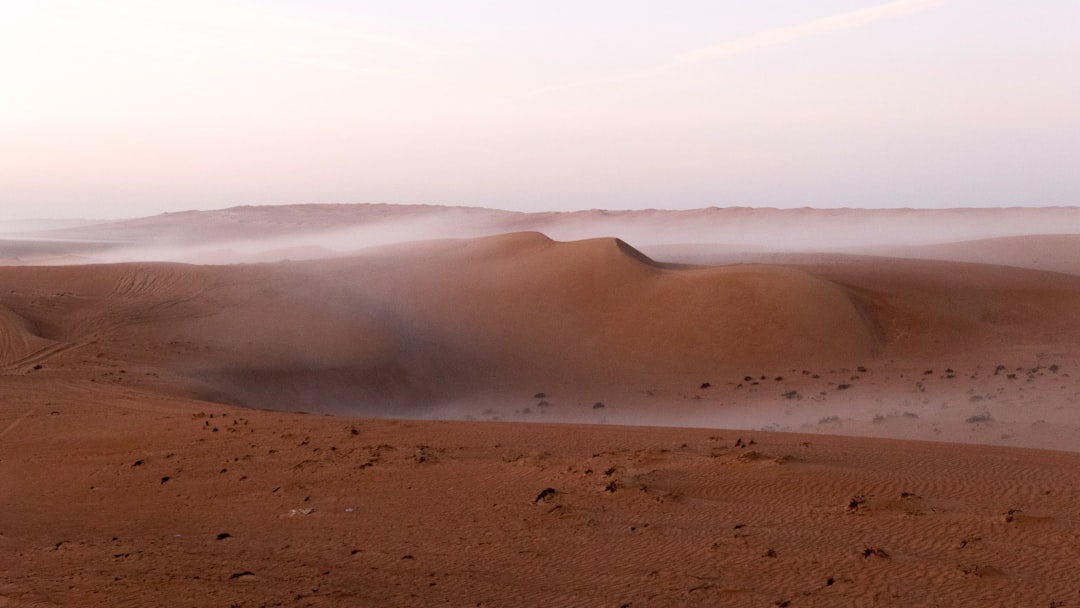
The success of the beetle’s water collection system depends on several environmental factors, including fog density, wind speed, temperature, and humidity levels. Dense fog obviously provides more water droplets for collection, but the beetle has adapted to work efficiently even in relatively light fog conditions. Wind patterns play a crucial role in bringing fog-laden air into contact with the beetle’s specialized surface.
Temperature differentials between the beetle’s body and the surrounding air can affect condensation rates on its back. The beetle’s dark coloration helps it absorb heat during the day, but this same feature can complicate water collection if the surface becomes too warm. The insect has learned to time its water-collecting behavior to coincide with optimal temperature conditions.
Seasonal variations in fog patterns require the beetle to adapt its behavior throughout the year. During periods when fog is less frequent, the beetle must rely more heavily on metabolic water production and water conservation strategies. This flexibility demonstrates the beetle’s remarkable ability to employ multiple survival strategies depending on environmental conditions.
The Role of Climate Change
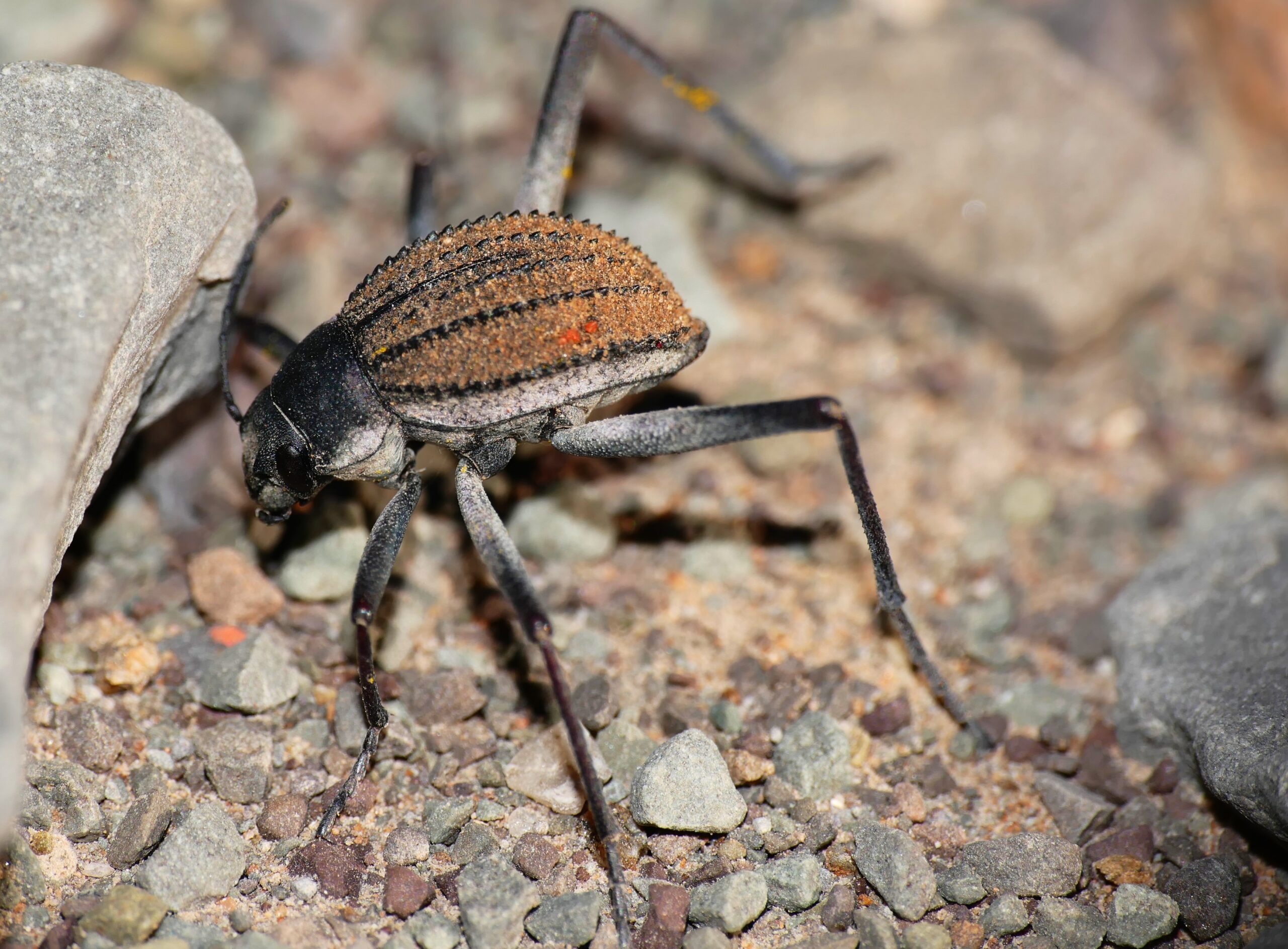
Climate change poses potential challenges to the Namib Desert beetle’s survival strategy, as shifting weather patterns could affect the fog formation that the beetle depends on for water. Changes in ocean temperature and atmospheric circulation patterns could alter the frequency and intensity of fog events in the desert. Scientists are monitoring these changes to understand how they might impact the beetle’s population.
Rising global temperatures could also affect the temperature differential between the ocean and desert that drives fog formation. Even small changes in this balance could significantly impact the beetle’s water collection success. The beetle’s survival depends on the precise timing and predictability of fog events, making it particularly vulnerable to climate disruption.
Research into the beetle’s adaptive capabilities suggests that these insects may be able to adjust their behavior in response to changing environmental conditions. However, the speed of current climate change may exceed the beetle’s ability to adapt through evolutionary processes. Conservation efforts are being developed to protect the beetle’s habitat and monitor population changes.
Research and Future Studies

Scientists continue to study the Namib Desert beetle to better understand the mechanisms behind its water collection system and to develop improved biomimetic technologies. Advanced imaging techniques are revealing new details about the beetle’s surface structure, while fluid dynamics modeling is helping researchers understand how water moves across the beetle’s back. These studies are providing insights that could lead to even more efficient water collection systems.
Future research directions include investigating how the beetle’s surface structure develops during its life cycle and whether environmental factors can influence the formation of hydrophilic and hydrophobic regions. Scientists are also exploring whether other desert insects have evolved similar water collection strategies. Comparative studies could reveal additional principles that could be applied to human technologies.
Ongoing research is also focused on understanding the beetle’s sensory capabilities and how it detects approaching fog events. This knowledge could help develop automated systems that activate water collection devices when conditions are optimal. The integration of biological sensing mechanisms with artificial water collection systems represents an exciting frontier in biomimetic engineering.
Conclusion
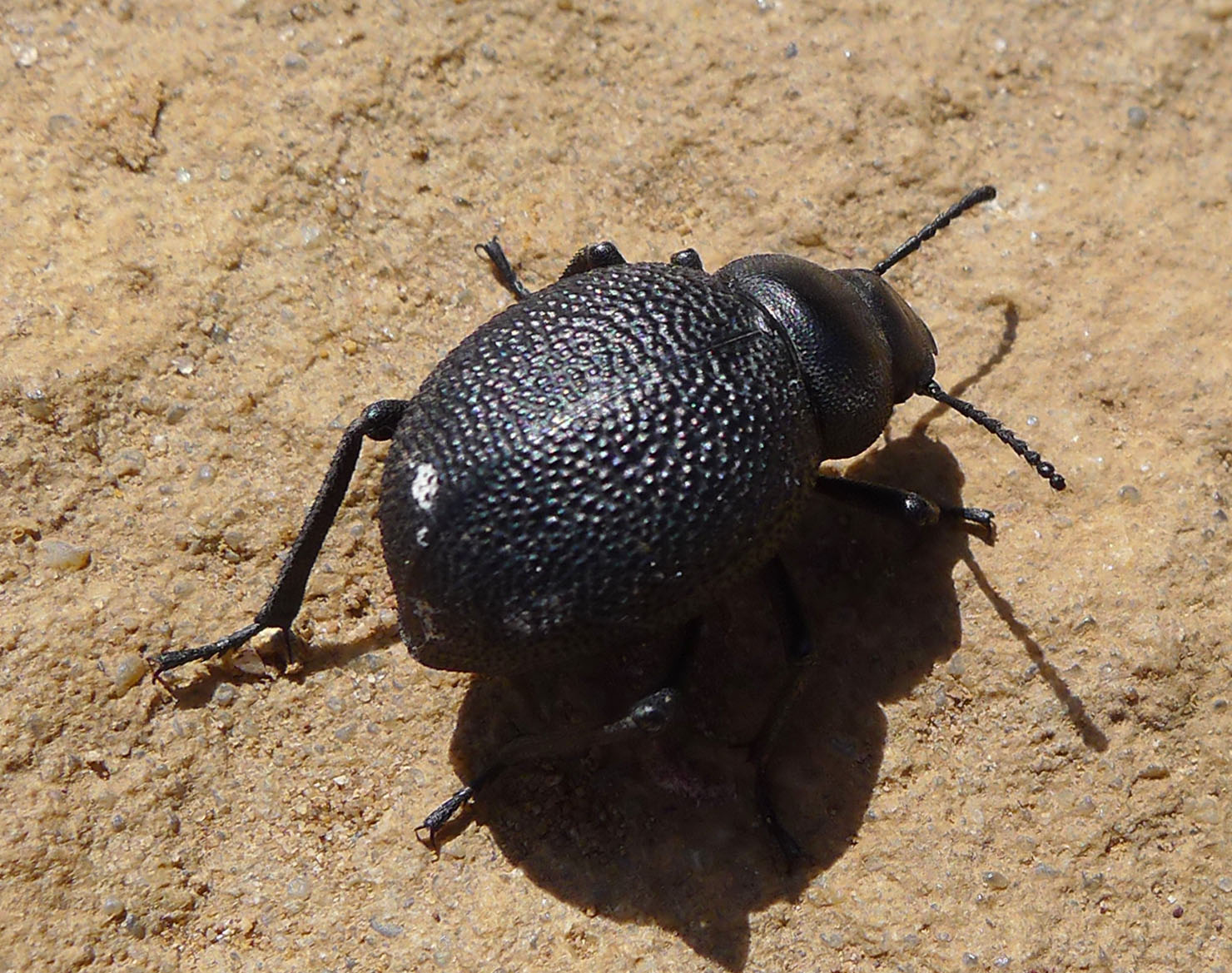
The Namib Desert beetle’s ability to drink fog off its back represents one of nature’s most elegant solutions to survival in extreme environments. This remarkable insect has transformed the challenge of finding water in one of Earth’s most arid regions into an opportunity for innovation. Through millions of years of evolution, the beetle has developed a sophisticated water collection system that outperforms many human-designed technologies.
The beetle’s success story offers valuable lessons about adaptation, resilience, and the power of biomimicry in solving human challenges. As water scarcity becomes an increasingly pressing global issue, the beetle’s fog-harvesting strategy provides a promising model for developing sustainable water collection technologies. The precision and efficiency of the beetle’s system continue to inspire engineers and scientists worldwide.
Perhaps most importantly, the beetle’s survival strategy reminds us that even in the harshest environments, life finds extraordinary ways to persist and thrive. The next time you see morning fog rolling across a landscape, remember that somewhere in the Namib Desert, a tiny beetle is performing one of nature’s most remarkable survival acts. Who would have thought that drinking fog could be the key to life itself?

